Title: DISAPPEARING CITY: TONG LAU, SHANGHAI STREET; Wang Zhiyu, 2024
Tong Lau, Mong Kok, Hong Kong
Introduction:
Tong Lau, meaning ‘Chinese building,’ is a significant type of residential building that was integral to Hong Kong’s architectural heritage. However, these traditional buildings have largely disappeared due to their old age and urban development, with fewer than 1 percent remaining. This essay aims to explore the disappearance of Tong Lau, focusing on the example of Tong Lau at Shanghai Street and its implications for the loss of community and old Hong Kong identity.
Tong Lau buildings were typically 4 to 8 stories tall, lacked elevators, and featured balconies, long stairs, and letterboxes. One reason for their disappearance is their age and shabby condition. Poor housing conditions in Tong Lau have been linked to infectious disease outbreaks, such as a significant COVID-19 in early 2021. Another reason is that Tong Lau buildings were demolished to make way for taller structures during the city’s development. In the past 20 years, the government and Urban Renewal Authority have managed to preserve around half of the remaining Tong Lau buildings, with the latest project being a set of 10 Tong Lau on Shanghai Street in Mong Kok in 2019. However, preserving these old buildings can be quite expensive. Although the government provides a grant with a maximum limit of HK$2 million, this amount may only be sufficient for roof repairs. Additionally, owners often need to apply multiple times to receive approval for repairing their properties. Furthermore, as the scheme only covered historically graded structures and owners had to make them accessible to the public, many tong lau built as homes did not qualify. There have been only around 10 approved applications for the grants each year over the past three years, mainly for buildings on larger sites, such as ancestral halls.
Methods:
To investigate the disappearance of Tong Lau, various research methods were employed, including online research, literature review, interviews, film review, and a field trip.
A field trip was conducted, accompanied by a Hong Kong friend named Sophia. Her lack of familiarity with Tong Lau buildings indicated that the younger generation had little knowledge of them, indicating the disappearance of Tong Lau in the young generation’s hearts.
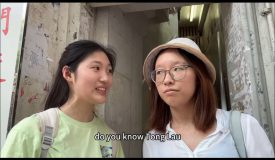
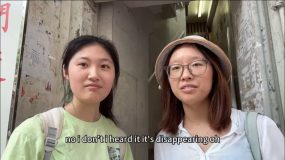
A literature review and film analysis were conducted to delve deeper into the topic and provoke reflection. The disappearance of “Tong Lau” is connected with the process of economic development. The reading “Communal after-living: Asian Ghosts and the City” delves into the loss of community and the isolation individuals experience in a city driven by economic growth. This resonates with the prioritization of financial interests over community well-being in Hong Kong, a deep implication of my video essay.
The video begins with an image of prosperous Hong Kong in Central, representing the stereotypical perception of the city. However, it quickly transitions to shabby Tong Lau buildings, creating a powerful visual contrast.
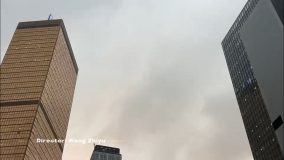
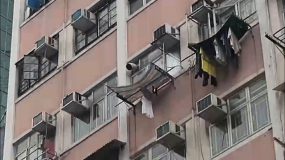
During the tour, the video employs a first-person perspective and eye-level angle to immerse viewers and allow them to experience the sights of Tong Lau as if they were exploring them themselves. Additionally, distant views are provided to capture the entirety of the Tong Lau buildings. To further convey the passage of time and changing circumstances, segments from the film “Echos of the Rainbow” are overlapped, featuring children running on the streets and offering glimpses of the image and history of old Hong Kong. Through these comparisons, a sense of the passage of time and the transformations that have taken place is conveyed.
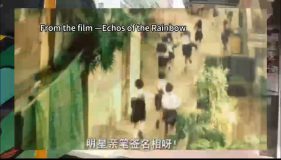
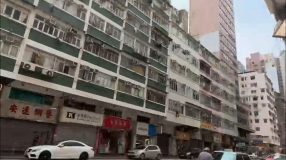
The following segment showcases scaffolds and mesh screens, visually confirming the demolition of Tong Lau. A voice-over highlights the current situation of Tong Lau’s demolishment, accompanied by images of news articles detailing fires and the sale of these buildings. These visuals disclose the inevitable fate faced by many Tong Lau structures.
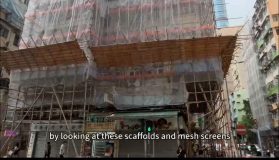
Through push lenses and close-up shots, viewers can observe the details of the dilapidated and aged structures inside Tong Lau. These visuals offer glimpses of the narrow stairs and old infrastructures, evoking a strong sense of obsolescence and disarray.
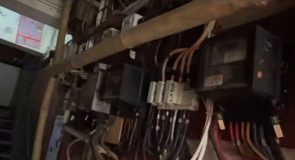
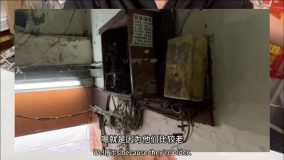
During interviews, it was revealed that the disappearance of Tong Lau can be attributed to its age and lack of elevators, causing inconvenience for older residents. Comparing relationships between generations, the second interviewee highlighted how the older generation was helpful and familiar with one another, while the younger generation today tends to avoid greetings. To showcase the sense of community in old Hong Kong, segments from the film “Echoes of the Rainbow” were included, featuring neighbors gathering on the “platform” in the 1960s, sharing meals, and enjoying each other’s company. This contrasted with the interviewee’s portrayal of present-day interactions. While acknowledging the impressive contemporary residential buildings, the speaker emphasizes that the true loss in Hong Kong is the close neighborhood bonds of the older generation.
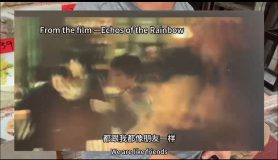
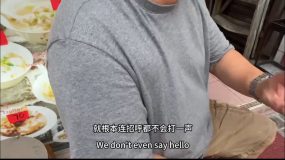
Cloud is used for transitions, evoking uncertainty and adding a mysterious touch. Clouds serve as a symbol for the future of Tong Lau. In the concluding moments, I overlap the zoom-out footage of Tong Lau with the initial shots taken in Central, aiming to inspire viewers to contemplate the future of Tong Lau.
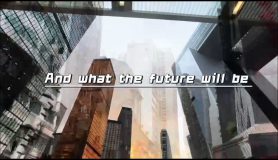
I selected “Farewell Book” as the music, capturing the essence of time’s passage and inevitable changes. It starts softly, evoking a subtle sense of sadness. During the street tour, the music intensifies as close-up and low-angle shots highlight the distinctive details of different buildings. The first instance showcases a well-maintained Tong Lau, while the second highlights a contrasting tall building. This emphasizes Tong Lau’s presence amidst towering structures. At the climax, a zoomed-in shot of a dilapidated Tong Lau creates a powerful impact, emphasizing its coming disappearance compared to newer buildings. The video concludes with the music fading out, symbolizing the fading away of Tong Lau and Hong Kong’s old identity.
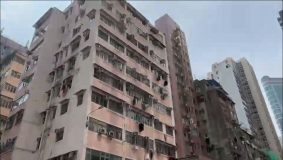

Conclusion and reflection
In conclusion, using multiple methods, including literature reviews and interviews, this essay explores the loss of Tong Lau in Hong Kong, prompting our reflection on preserving architectural heritage and community values amidst urban development, safeguarding the city’s identity and cultural heritage.
Reference:
Ancuta, Katarzyna. “Communal After-Living: Asian Ghosts and the City.” Palgrave gothic, January 1, 2020. https://doi.org/10.1007/978-3-030-43777-0_10.
Beijing Visitor – China Travel Guide. “Tong Lau in Hong Kong,” June 17, 2023. https://www.beijing-visitor.com/hong-kong-culture/tong-lau-hong-kong.
Cathay Pacific. “Why We Love Hong Kong’s Tong Lau | Cathay,” n.d. https://www.cathaypacific.com/cx/en_HK/inspiration/hong-kong/why-we-love-hong-kongs-tong-lau.html.
Discover Hong Kong. “香港唐楼的前世今生 | 香港旅游发展局,” n.d. https://www.discoverhongkong.cn/china/explore/culture/the-heritage-house-revival.html?_gl=1*1qwshj5*_ga*MTg0NjM1NTg0MS4xNzE1NDAyMTM4*_ga_LF2X7S3NQM*MTcxNTQwMjEzNy4xLjAuMTcxNTQwMjEzNy4wLjAuMA.
Ku, Agnes S. “Immigration Policies, Discourses, and the Politics of Local Belonging in Hong Kong (1950-1980).” Modern China 30, no. 3 (July 2004): 326–60. https://doi.org/10.1177/0097700404264506.
Lin, Edith, and Edith Lin. “Vanishing Tong Lau: Hong Kong Heritage Experts Call for Action, Incentives to Save Last Pre-War Shophouses.” South China Morning Post, September 4, 2022. https://www.scmp.com/news/hong-kong/society/article/3191243/vanishing-tong-lau-hong-kong-heritage-experts-call-action.
Localiiz. “Hidden Hong Kong: A History of Tong Lau, the Colourful Tenement Building in Hong Kong,” n.d. https://www.localiiz.com/post/culture-history-tong-lau-tenement-building-hong-kong.
Muthanna, Anjali. “Historic Sheung Wan Tong Lau Transforms Into Free Community Space Until April 2024 – The HK HUB.” The HK HUB, February 27, 2024. https://thehkhub.com/historic-sheung-wan-tong-lau-transforms-into-free-community-space-until-april-2024/.
Unseen, City. “Where Did All the First Generation Tong Lau Go?” City Unseen, April 3, 2024. https://cityunseen.hk/where-did-all-the-first-generation-tong-lau-go/.
Wong, Wendy Siuyi. “Introduction: The Unveiling of the Disappearance.” The Disappearance of Hong Kong in Comics, Advertising and Graphic Design, 2018, 1–11. https://doi.org/10.1007/978-3-319-92096-2_1.
香港民風大典 Contributors To. “唐樓.” 香港民風大典, n.d. https://hongkong.fandom.com/zh-hk/wiki/%E5%94%90%E6%A8%93.
Wang Zhiyu
UID: 3036129113
I think the video presents your content clearly and t’s great to support your research idea with a couple of interview videos. The discussion initiated at the end of your video and the accompanying background music fit your theme well.
1. Contents
You have thoroughly covered the historical, cultural, and social significance of Tong Lau, including various dimensions, such as the economic pressures leading to their demise and the community aspects. Besides, literature reviews, field trips, and film analysis enhance the credibility and richness of your content.
2. Text
The use of descriptive language, particularly in setting scenes and describing the physical attributes of Tong Lau, effectively draws readers into the narrative.
3. Visual Design
The use of first-person perspective and eye-level angles in the video essay is particularly effective in making the viewer feel present in the environment.
One thing that impressed me is the inclusion of film clips from “Echoes of the Rainbow” and the integration of some personal perspectives. It is very creative to involve them. Moreover, the overlay of some picture to the original video is somewhat eye-catchy.